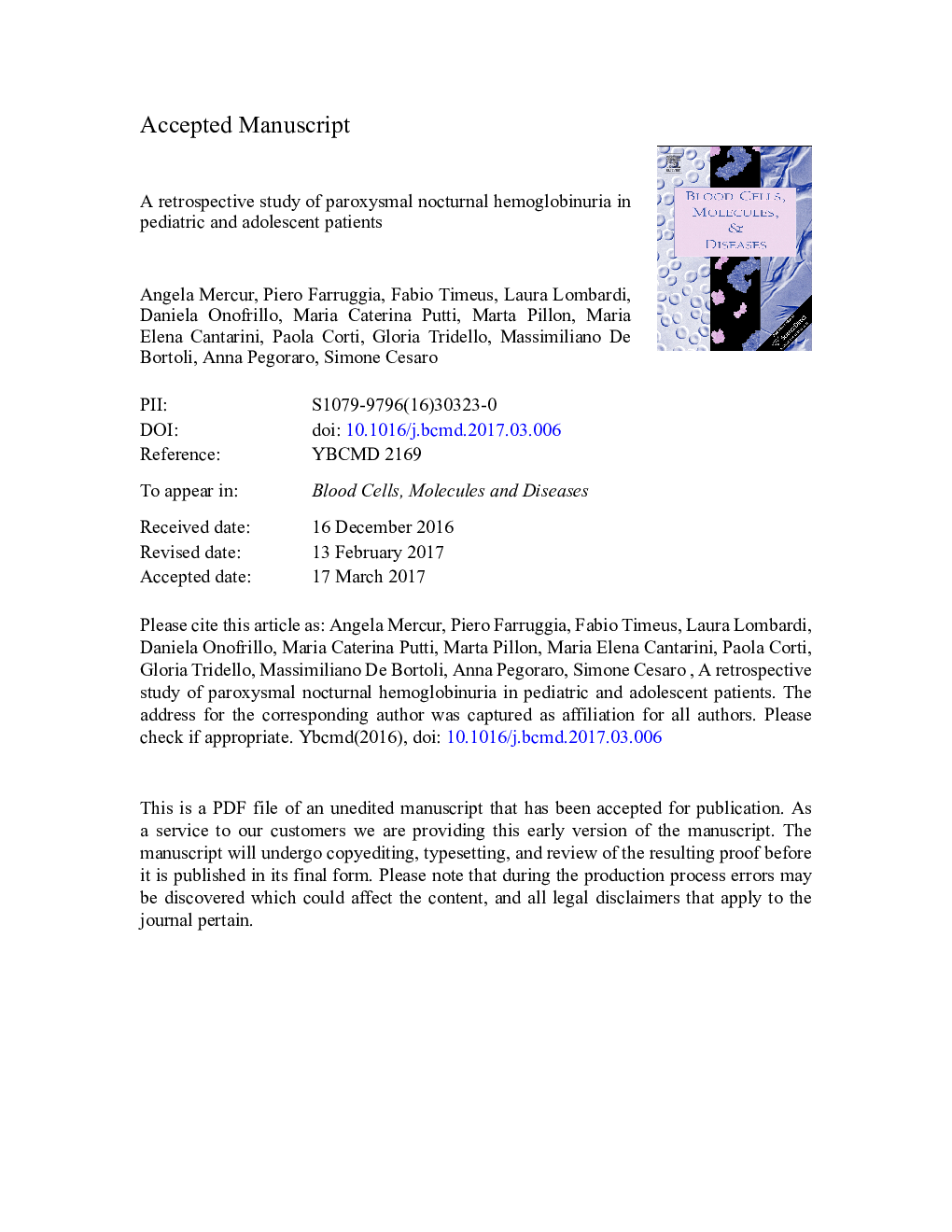| Article ID | Journal | Published Year | Pages | File Type |
|---|---|---|---|---|
| 5591423 | Blood Cells, Molecules, and Diseases | 2017 | 23 Pages |
Abstract
Paroxysmal nocturnal hemoglobinuria (PNH) is a rare disease, especially in children, characterized by intravascular hemolysis, thrombotic events, serious infections and bone marrow failure. We describe 16 patients who were diagnosed with PNH in childhood or adolescence. The time interval between the onset of symptoms and the PNH diagnosis and its treatment were compared in patients with classic PNH versus PNH associated with bone marrow disorder (PNH/BMD). A greater delay in diagnosis was observed in classic PNH compared to PNH/BMD patients. The first group of patients had higher levels of LDH, total bilirubin and absolute reticulocyte count and a bigger PNH clone size compared to PNH/BMD patients; also thrombotic events were observed only in the classic form of PNH. Conversely, PNH/BMD patients showed lower median levels of platelets. Apart from standard supportive measures, four patients with classic PNH received eculizumab whereas four patients with PNH/BMD underwent hematopoietic stem cell transplantation. Our series confirm that the most frequent presentation of PNH in the pediatric-adolescent age is PNH/BMD. The delay between the onset of symptoms and PNH diagnosis is relevant principally in the classic form. Moreover, our study showed that any case of unexpected thrombosis represents a criterium to perform a PNH screening.
Related Topics
Life Sciences
Biochemistry, Genetics and Molecular Biology
Molecular Biology
Authors
Angela Mercuri, Piero Farruggia, Fabio Timeus, Laura Lombardi, Daniela Onofrillo, Maria Caterina Putti, Marta Pillon, Maria Elena Cantarini, Paola Corti, Gloria Tridello, Massimiliano De Bortoli, Anna Pegoraro, Simone Cesaro,
